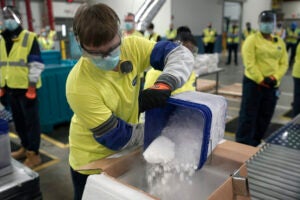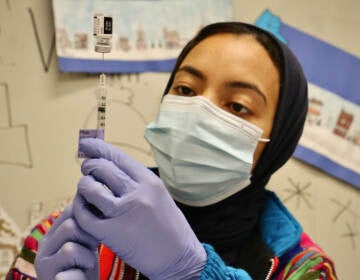‘It’s not going to be anything magical,’ but there is hope: Here’s what to expect for the pandemic in 2021
Another post-holiday spike is likely as the new calendar year begins. But health experts also look forward to the vaccine rollout picking up steam.
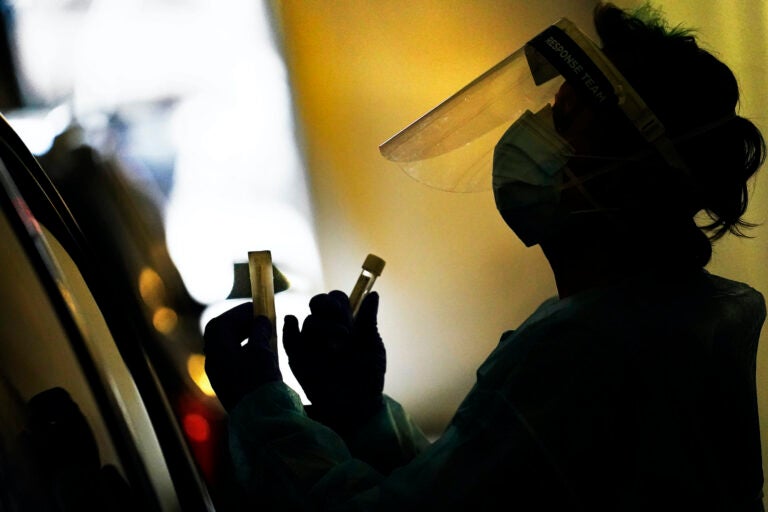
In this file photo, a health care worker wears personal protective equipment as she speaks with a patient at a mobile testing location for COVID-19. (AP Photo/Robert F. Bukaty, File)
Ask us about COVID-19: What questions do you have about the current surge?
With the start of 2021 comes mixed emotions: relief that a painful year has ended, exhaustion, even hope. Because with COVID-19, even as vaccine distribution has begun, we’re not out of the woods yet, and it’s still smart to be cautious about the virus.
“It’s not going to be anything magical that happens because the calendar year rolls over,” said Neal Goldstein, an epidemiologist at Drexel University’s Dornsife School of Public Health.
Goldstein said the region is likely to see another post-holiday spike in COVID-19 case numbers — as well as a higher percent-positivity rate and an increase in hospitalizations — in the next few weeks. Coronavirus case counts increased due to gatherings and events after past holidays like Halloween and Thanksgiving; the next few weeks will be no different, he said.
“Even though we have a vaccine, and we’re in the very early stages of getting people vaccinated, it’s still the same messaging here: limit your social interactions, wear a mask, practice good hand hygiene.”
And hospital staffs just beginning to see the end of that Thanksgiving spike are echoing the same precautions, saying they’re worried about yet another post-holiday surge.
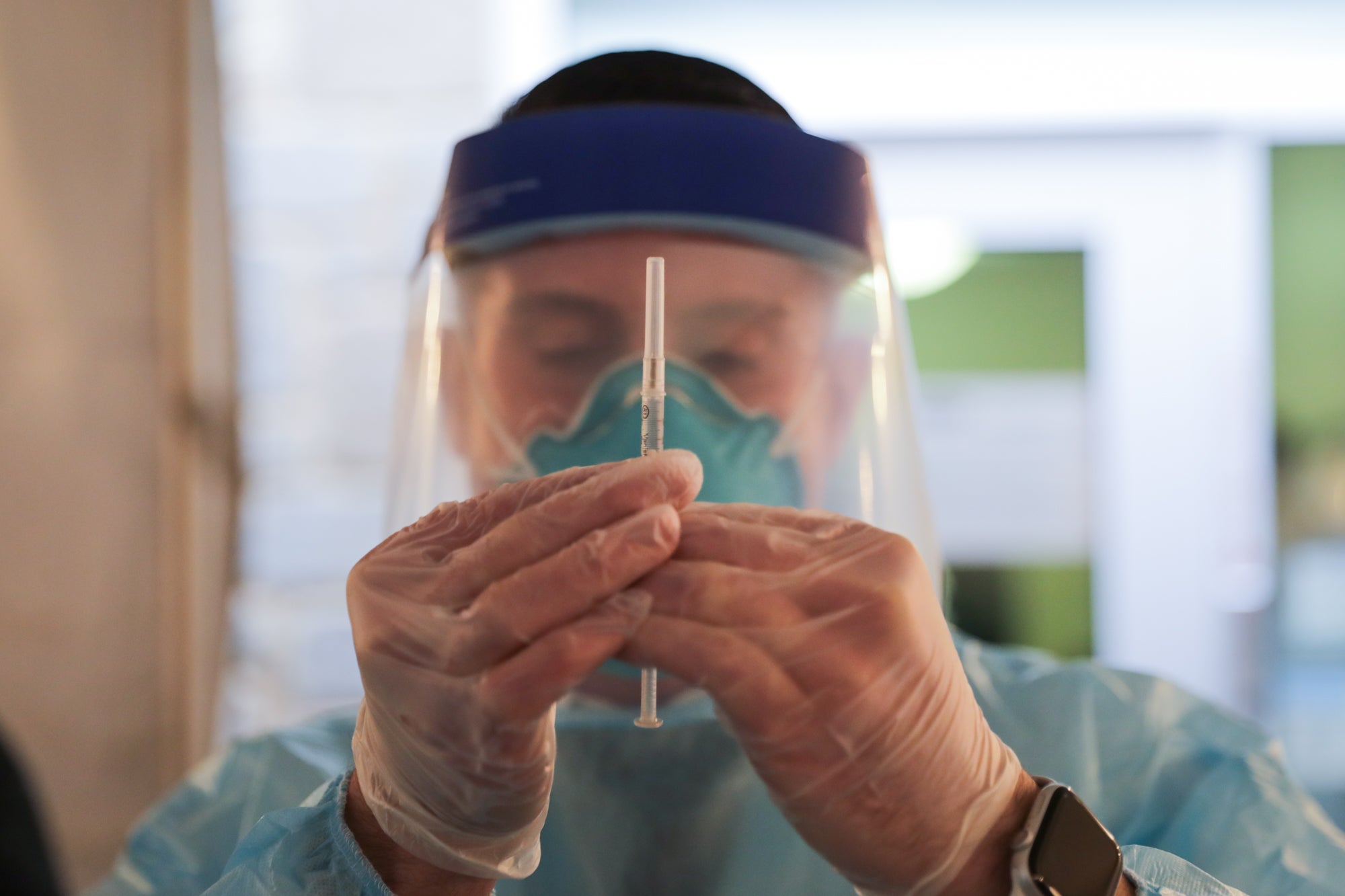
“We’re anticipating that for Christmas, people are going to gather… and there’s going to be an increased number of COVID patients,” Suburban Community Hospital chief medical officer Dr. Mathew Mathew said in mid-December. “We’re anticipating probably after Christmas, we are going to reach our capacity.”
Will the region be able to handle a new spike? Right now, health care officials are hopeful.
Take Montgomery County, where County Commissioners Chair Dr. Valerie Arkoosh mentioned hospital overwhelm just a few weeks ago. At Suburban Community, Mathew said, hospital load hovered at 80% to 90% capacity shortly after the late November spike. But as one of three Pennsylvania hospitals within Prime Healthcare’s network, he said, Suburban’s staff has learned to manage surges by reallocating personnel to coronavirus units or even transporting high-risk COVID-19 patients to its sister hospitals’ available ICU beds.
Vaccinations for emergency and on-floor personnel, which began two weeks ago, will also assist with staffers’ COVID fatigue and protection. In the event of another surge, local hospitals have plans and procedures to foster cooperation. And SEPA Smart, an emergency disaster response team of health care staff, is ready for deployment if or “when all the hospitals, despite their cooperation, have exhausted their equipment, ventilators, staff.”
“Each day is different,” said Dr. Richard Lucas, director of Suburban Community’s emergency department. “We’re good today, we were good yesterday, we play each day as it goes. One day at a time.”
Other local hospitals are planning similar contingency plans. At Abington Hospital, one of only two trauma centers in Montgomery County, staff members are limiting their additional duties and training to maintain availability for COVID demand. At Einstein Medical Center Montgomery in East Norriton — which hovered around 90% ICU capacity during the recent Thanksgiving surge — the staff uses a three-color emergency tier system: green, yellow, and red. Green is normal; yellow indicates bed capacity concerns; red means the hospital is at or over capacity. Right now, Einstein remains in yellow.
“We are very much hoping that we don’t have to go into the red phase, which means we will have to start to care for patients in [alternative] spaces, so we’ll have to move into like our recovery room outside of our operating room or our pre- and post-area where patients come when they are coming in for a surgical procedure,” said Beth Duffy, chief operating officer and president of Einstein Medical Center Montgomery.
At no point during the pandemic has Einstein Montgomery operated in the red tier, she added — if it comes to that, the hospital will limit surgical volume and bring in temps and agency workers to help meet staffing levels.
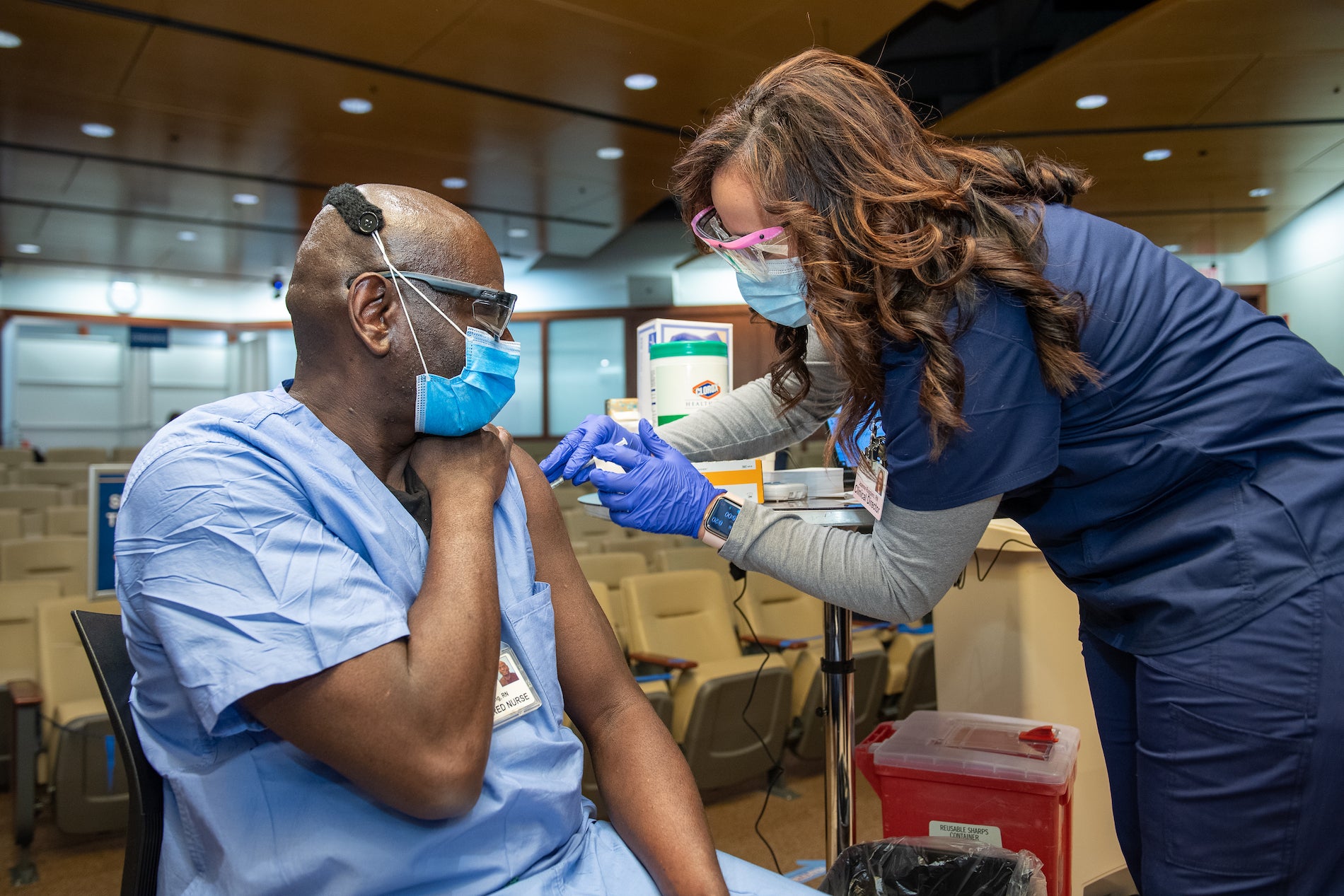
When will things go ‘back to normal’?
It’s not just the new year that’s bringing people hope. Most of the local hospital staffers who spoke to WHYY News mentioned looking forward to the COVID-19 vaccine’s rollout and mentioned that workers at their hospitals were receiving the first doses now.
“The more frontline health care workers that we can get immunized, the more protection that we’ll have for those workers, as well as their patients and ancillary staff within hospital settings,” Goldstein said.
But those early inoculations are unlikely to stop community spread of the coronavirus — they’re only a few doses in the grand scheme of things.
“We’re not talking weeks, we’re talking months, until we can actually see some kind of community effect from vaccination,” Goldstein said. “The rollout of a vaccination at a population level is extremely difficult at the scale that we’re discussing here, and in the time frame that we’re discussing here.”
Although the epidemiologist describes himself as a bit of a cynic, he’s still hopeful. By the summer, he and his colleagues expect to see cases declining as a result of the new vaccine; a year from now “is when I would expect us to have the majority of this behind us.”
“The idea of having a new year to look forward to is something, and it’s good to have hope,” Goldstein said.
“It’s not just wishful thinking … There have been so many pandemics in our history, and every one of them ends at some point, and that’s the silver lining that we need to keep in mind here: is that this will come to an end.”
___
WHYY’s Kenny Cooper contributed reporting.

Get daily updates from WHYY News!
WHYY is your source for fact-based, in-depth journalism and information. As a nonprofit organization, we rely on financial support from readers like you. Please give today.


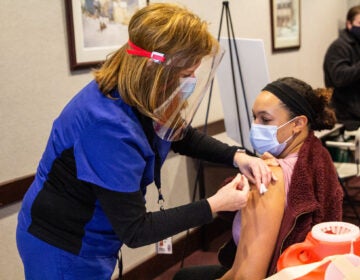
![CoronavirusPandemic_1024x512[1]](https://whyy.org/wp-content/uploads/2020/03/CoronavirusPandemic_1024x5121-300x150.jpg)
